In order to fulfill your objectives with an email (in this article, we will limit ourselves to getting a click), it is essential to prove to your reader that you have an undeniable competitive advantage! The notion of value chain is mainly used during product design. It is about developing a competitive advantage, the chain being composed of all the activities that can add value to a product.
Disclaimer 1: I warn you in advance, if you are a specialist of the subject, you will not like this article as I might completely deviate from the concept 🙂
Disclaimer 2: We are not talking about newsletters with several different subjects, but commercial and/or promotional emails mainly pushing a product or a commercial action.
The three basic elements of email design
Obviously, an email is full of different elements. But here, we won't talk about segmentation, deliverability, ... but only about content and three basic elements. These basic elements are strictly related to the behavior of an email when it is received, we will assume that two of the three basic principles of direct marketing are already validated: the message was sent to the right person and the good time.
1. The object
When a recipient begins to interact with an email, the first step is to catch their attention during the visual scan of the inbox. Contrary to popular belief, the most important element at this point is not the subject line, but the message itself. the email sender's name. Think about your own practices, whatever the object, are you more interested in an email sent by your mother or by Amazon? The recipient therefore tends to scan the senders first, check the level of proximity, check the level of trust and only then check whether the subject is of interest. On the other hand, to garner trust, your sender name needs to be as stable and permanent as possible (unless you're CDiscount 😉 ), so it's not a creative element. Whatever happens, it's on the subject line that you'll be able to deploy your creativity to improve your opening performance.
Much more than just one of the 3 basic elements of email design, theobject is the first element of creativity that must be designed! You should stop designing objects immediately 5 minutes before sending a campaign, instead you should design it at the briefing stage (even if it means modifying it later).

2. The content
Content is vague! When we know that you have between 3 and 8 seconds attention before the reader decides to continue the adventure or leave it at that, you really have to focus on the most important thing. And clearly, you have to focus all our attention on a relevant title, able to interest the reader. You can also develop a sub-title (or a super-title) but it should not compete with the main title. The rest will only be read by people who are really interested and who still need additional information (reassurance?) before going further.
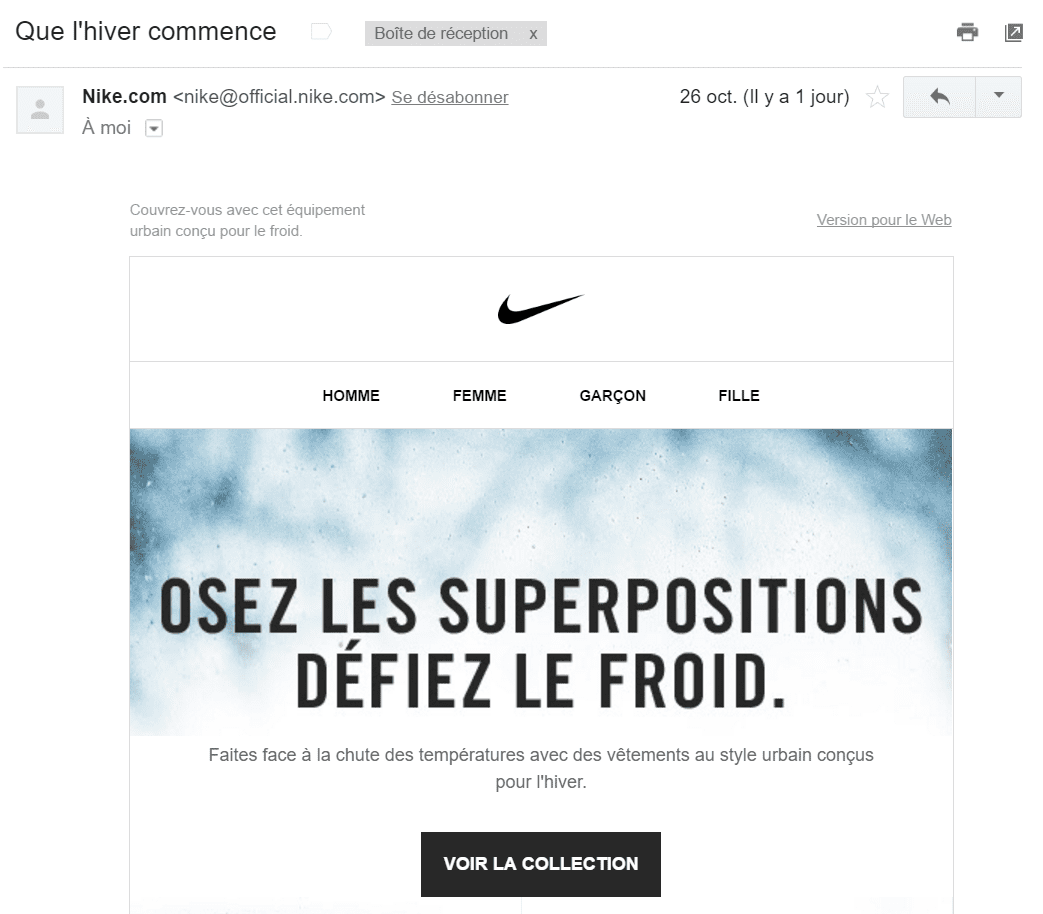
3. Call to action
This is the ultimate step, which will concretize the objective of your email, to take your readers to click, to take action, and who knows, to convert. Your call to action is the nose in the middle of your emailing faceIf so, your campaign will be in trouble!
And that's it!
The images, the secondary texts, the ergonomics, ... all this is very important... but not as important as the 3 elements we just talked about, which alone should count for 50% of the energy you put into the design of your messages!
Yes, and ... what is this value chain thing then?
We come, we come, ... these three basic elements must be connected and complementary ! Each of them must bring a specific value element to your offer or product. No question of being redundant!
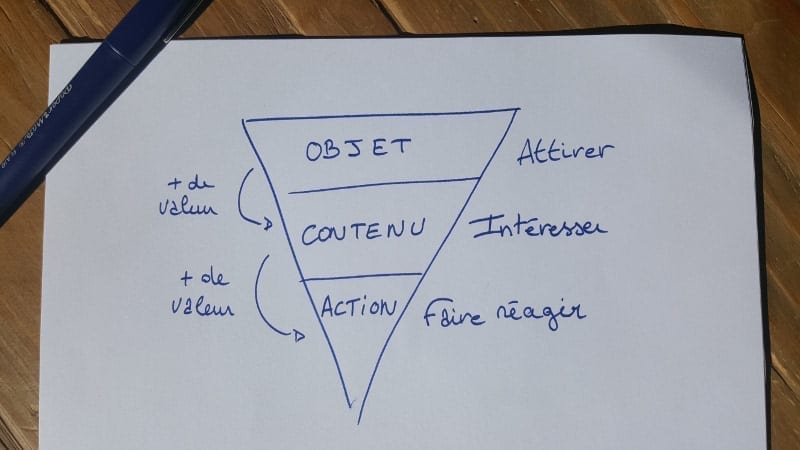
In this logic, the object (without being misleading) has the function of attracting the recipient's attention by offering a first glimpse of the value of the offer or the value of the product. Techniques such as the urgency effect, highlighting the value of the benefit, notions of exclusivity, notions of rarity that should appeal to the reader are used.
The content (the main title) must provide additional information to the subject. The title should interest the reader and provide all the main information related to the offer or product. The title is descriptive, as dynamic as possible and without ambiguity.
Finally, thecall to action must encourage the click by summarizing in two or three words the next step in the conversion process. Its objective is to make people react directly after reading the main title (and its possible subtitle). For this reason, it must be perfectly visible and identifiable as soon as the email is opened.
The concept of value chain is twofold here. First, at each step, the reader must be aware of the competitive advantage you have, then, the link must make sense, the tone must be similar, we must be able to move from one to the other easily without losing the thread.
Some examples
CravateChic
In this example from CravateChic, we have an object that starts well since it takes the bet to offer you what you should always have, the must-haves ... except that the question does not end with a question mark. The main title "The must-haves to stay in style" takes a piece of language from the object, but does not bring any clue about the competitive advantage that CravateChic could have on its market and is not visible enough. We would have preferred something like "A huge catalog... to take care of your elegance". The CTA uses the very neutral "Discover" when we could have had something like "Renew your wardrobe".
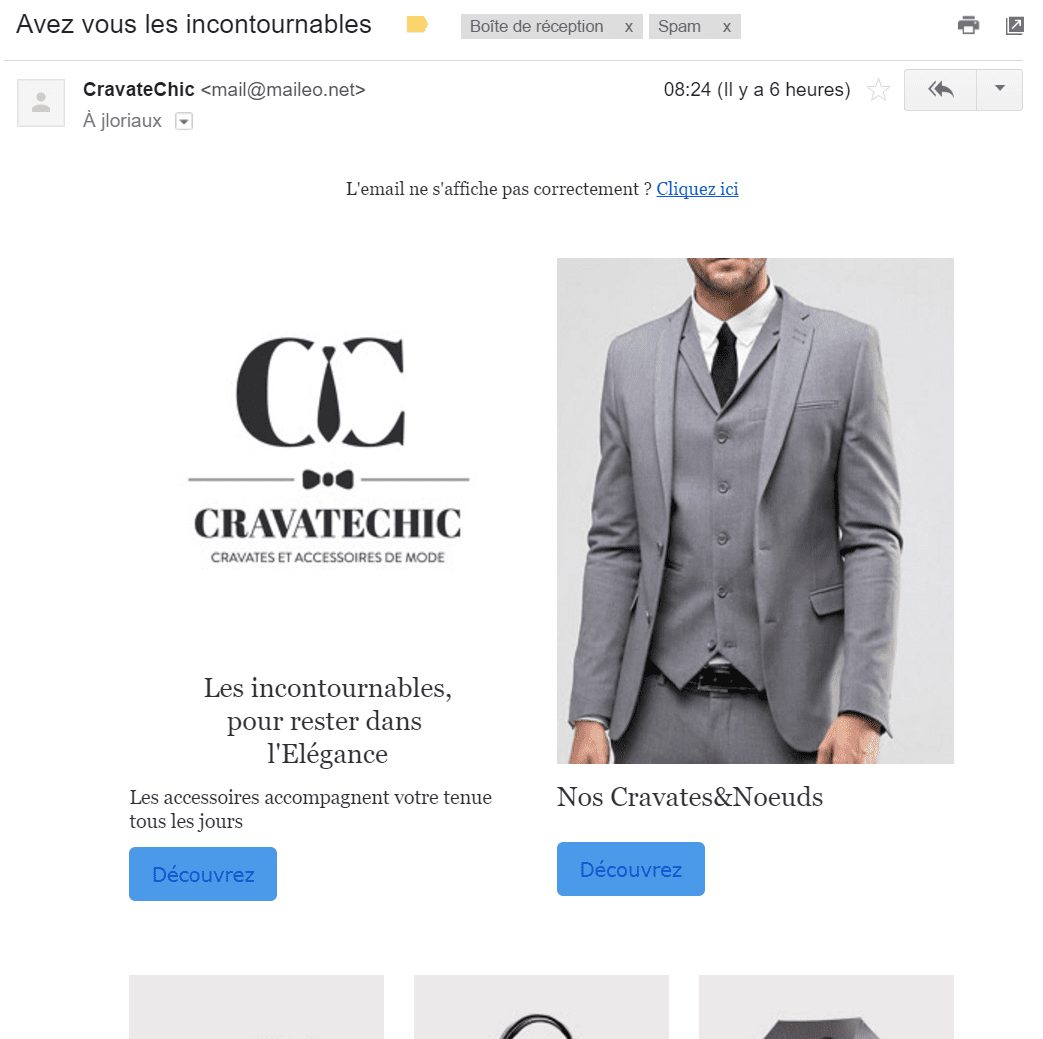
Zara Home
Here, we have a rather dynamic subject line that manages to share in a few words two different concepts and explain the content of the email. Unfortunately, the title takes a part of the object and does not bring any complement and the call to action located at the bottom of the email is a simple "Discover more". Not really a follow-up...
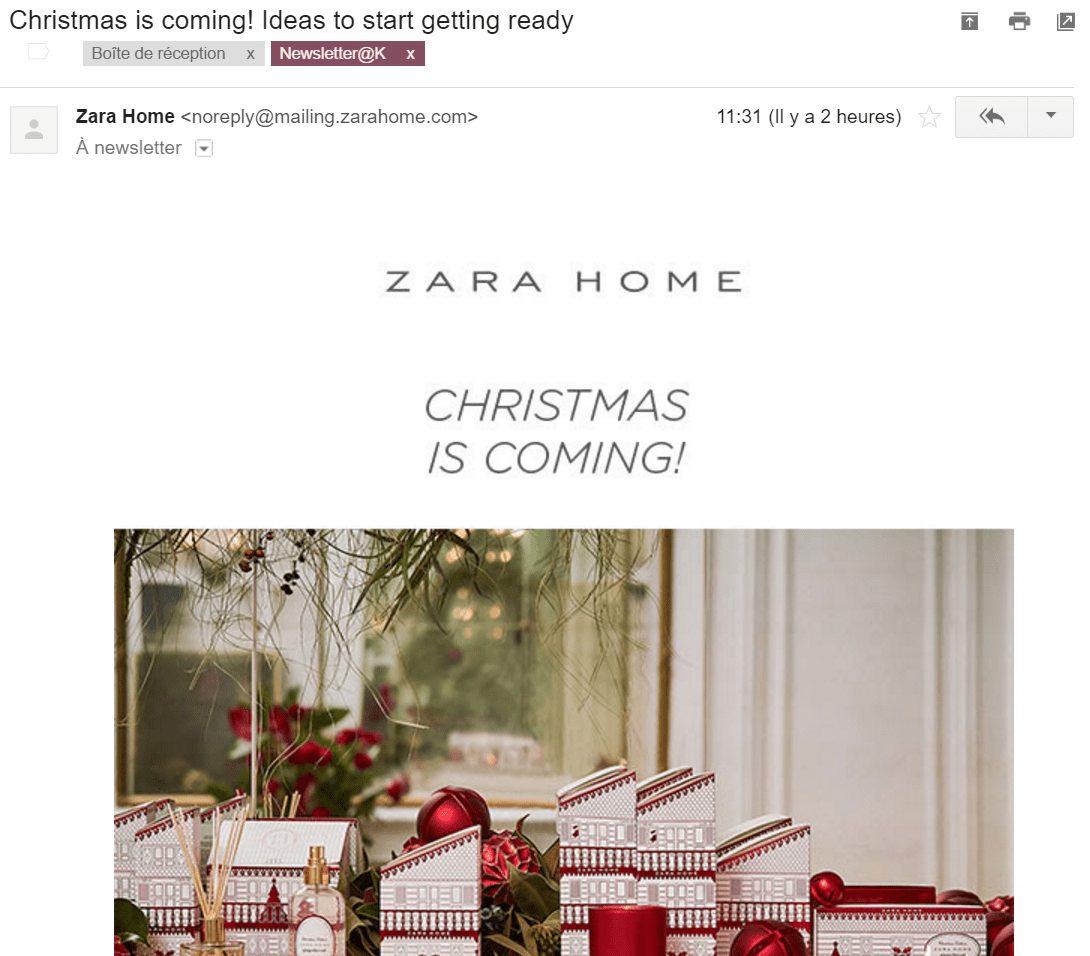
Fossier House
Here we have a rather classic example in which we find the same information in the object, the main title and even the pre-header. No call to action at all in this case. The brand name is also repeated throughout, but it's not clear what the benefit of the action is. The focus is on the packaging, not the product (even though the gift boxes could have been presented as a must-have event.
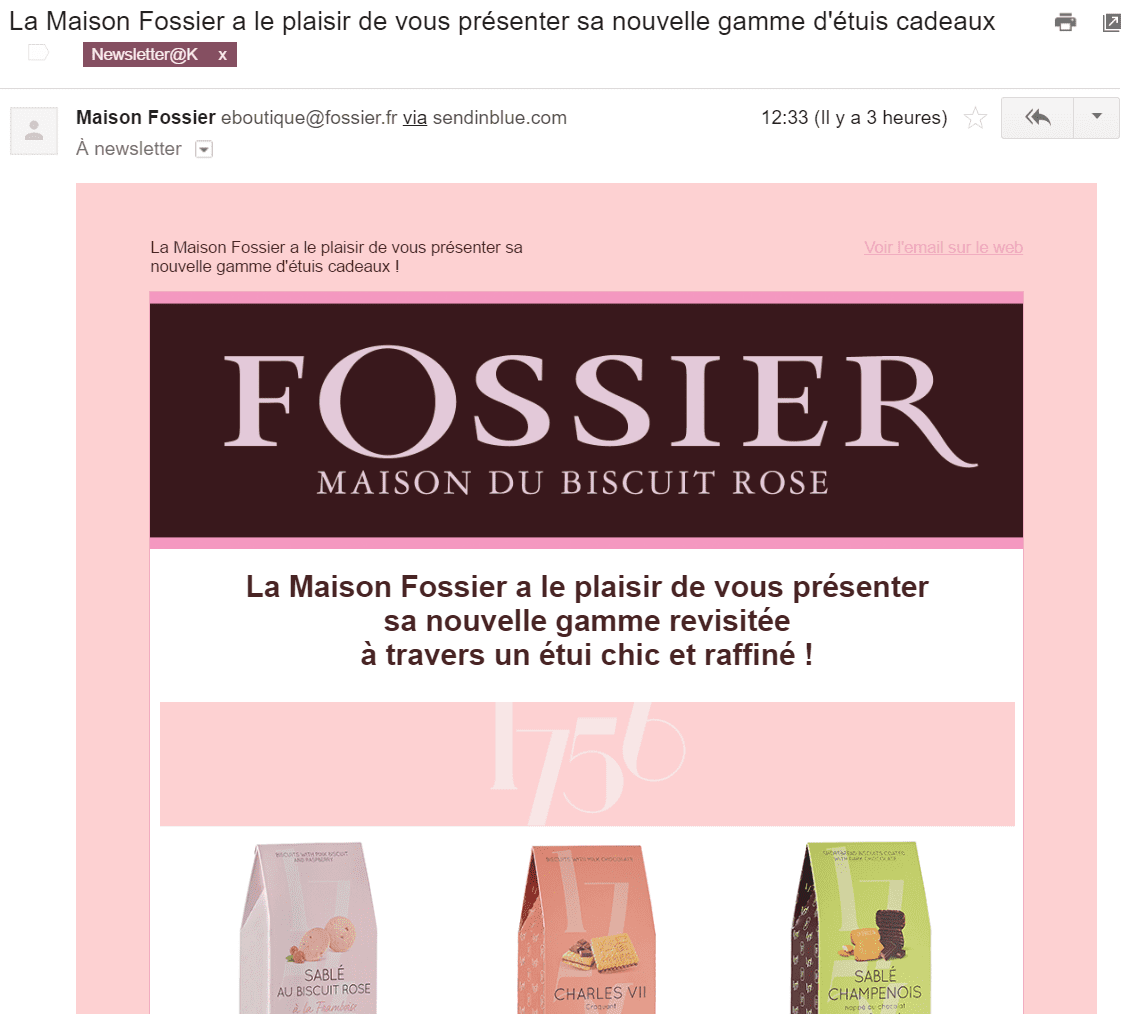
One Response
Hello,
To complete your article on emailing, I would add to anticipate the strong development of AI.
Emailing strategies will be smarter and more adapted to users' preferences and needs.
It's a win-win situation, the user will be solicited only when they need it and the advertiser will have better performance.